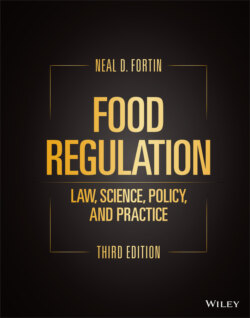Читать книгу Food Regulation - Neal D. Fortin - Страница 150
Gluten Free
ОглавлениеFDA defined “gluten‐free” as meaning the food either is inherently gluten free or does not contain an ingredient that is: (1) a gluten‐containing grain (e.g., wheat); (2) derived from a gluten‐containing grain that has not been processed to remove gluten (e.g., wheat flour); or (3) derived from a gluten‐containing grain that has been processed to remove gluten (e.g., wheat starch), if the use of that ingredient results in the presence of 20 parts per million (ppm) or more gluten in the food. Also, any unavoidable presence of gluten in the food must be less than 20 ppm.77
Therefore, “gluten free” does not mean zero gluten, and the “may contain gluten” statement could be compatible with the gluten free claim if the unavoidable presence of gluten in the food is less than 20 ppm.
Normally when making a “free” claim for a food that is inherently free of that substance, it is considered misleading unless the claim is qualified. For example, one cannot claim, “cholesterol free,” on soybean oil but rather must make a qualified statement, such as “a cholesterol free food.” A different approach, however, is taken with gluten because of the public health significance. Among other reasons, it might be misleading to suggest that a particular food category is always gluten‐free because cross‐contact with gluten‐containing ingredients can and does occur in facilities where gluten‐containing ingredients are present. In short, foods that are inherently free of gluten can make “gluten free” claims without being considered misleading.78
